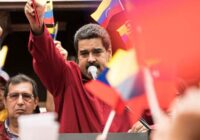What’s there to see in Cuba? [Click the image above or scroll down to view the mini gallery.]
Western tourists have flocked to Cuba since the normalization of diplomatic relations between the United States and Cuba in 2015. The main interest for tourists is to explore the country that saw one of the most successful guerrilla movements of modern times.
However, the vast majority of these tourists rarely set foot in Sierra Maestra, a densely forested mountain range in which the Fidel Castro-led armed movement began.
In 1956, Castro and 81 fighters came ashore in southern Cuba via the Granma yacht. As soon as they disembarked, the young internationalist guerrillas were caught in a deadly ambush by the Cuban army, and only 12 of them survived.
The survivors escaped into the depths of Sierra Maestra and established La Comandancia de La Plata, the headquarters of the Cuban armed guerilla movement.
Since the victory of the Cuban Revolution in 1959, the headquarters has been designated a national monument and preserved in the middle of the rugged terrain of Sierra Maestra. The mountain range is about 800 kilometers from the capital Havana, and Villa Santo Domingo is the last village at the border of Sierra Maestra National Park.
The only route to the headquarters of the revolution—at the height of about 1,000 meters—is to pass through a two-hour hiking path that begins at Alta de Naranja.
Today, this region is part of Tourquino National Park, which is also known as Sierra Maestra National Park. But before the revolution, this area was the stronghold of guerrillas launching attacks on the US-backed army of the dictator Fulgencio Batista. Their hideout was located in the heart of deep forests where no military truck could reach, and the tall tropical trees hid it from aerial surveillance and airstrikes.
From 1956 to 1959, guerrillas built a revolutionary army, and with wide support of local farmers and peasants, they controlled the entire Sierra Maestra. During the last phase of the Cuban Revolution, members of the revolutionary army crossed these mountains and flooded into cities of Santiago de Cuba, Yaguajay and Santa Clara.
The views expressed in this article are the author’s own and do not necessarily reflect Fair Observer’s editorial policy.
Photo Credit: Changiz M. Varzi
Support Fair Observer
We rely on your support for our independence, diversity and quality.
For more than 10 years, Fair Observer has been free, fair and independent. No billionaire owns us, no advertisers control us. We are a reader-supported nonprofit. Unlike many other publications, we keep our content free for readers regardless of where they live or whether they can afford to pay. We have no paywalls and no ads.
In the post-truth era of fake news, echo chambers and filter bubbles, we publish a plurality of perspectives from around the world. Anyone can publish with us, but everyone goes through a rigorous editorial process. So, you get fact-checked, well-reasoned content instead of noise.
We publish 2,500+ voices from 90+ countries. We also conduct education and training programs
on subjects ranging from digital media and journalism to writing and critical thinking. This
doesn’t come cheap. Servers, editors, trainers and web developers cost
money.
Please consider supporting us on a regular basis as a recurring donor or a
sustaining member.
Will you support FO’s journalism?
We rely on your support for our independence, diversity and quality.






